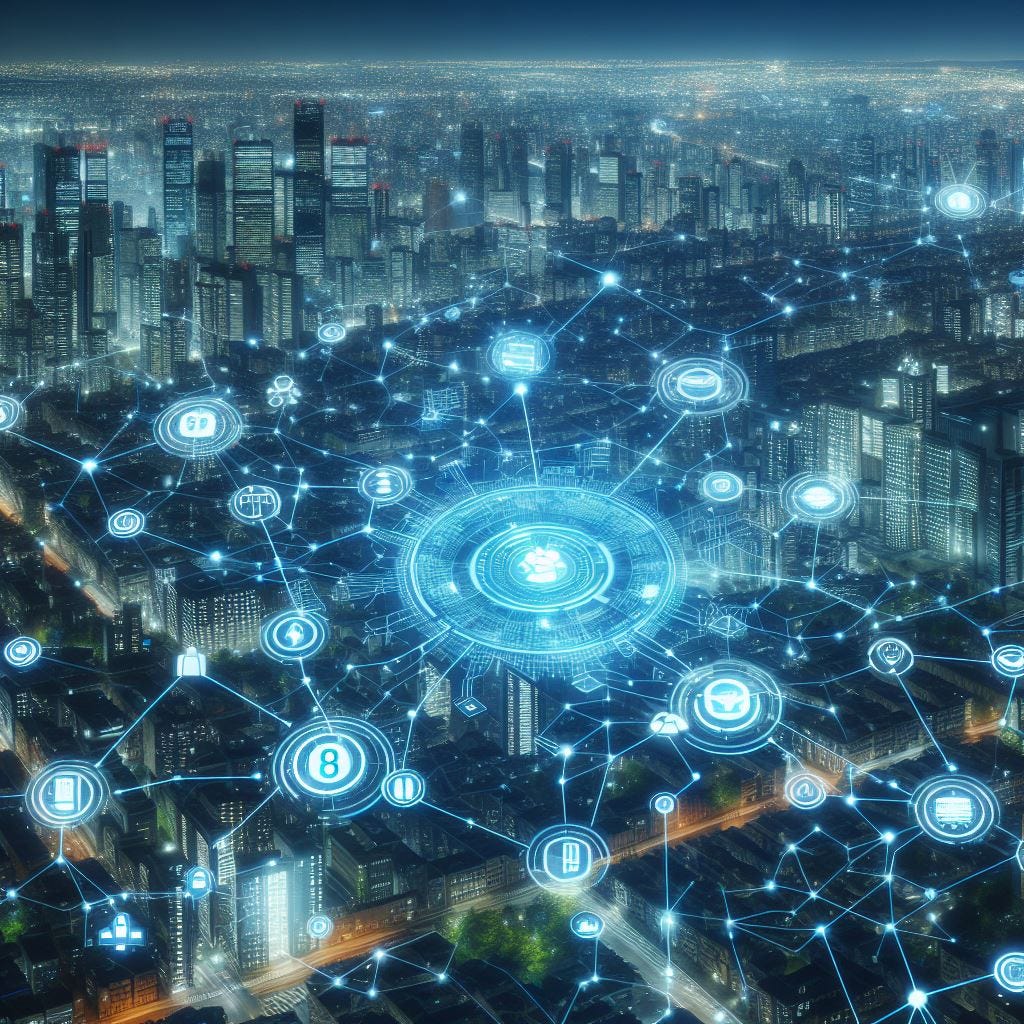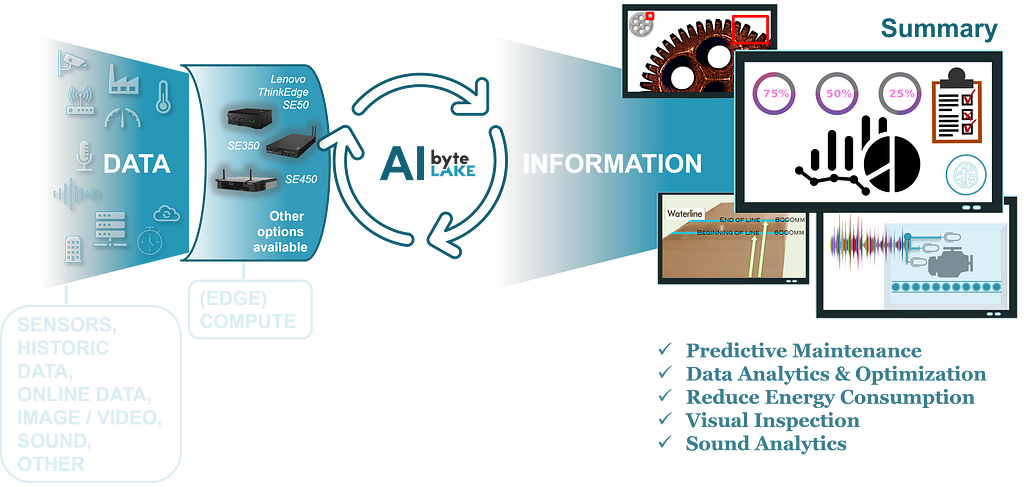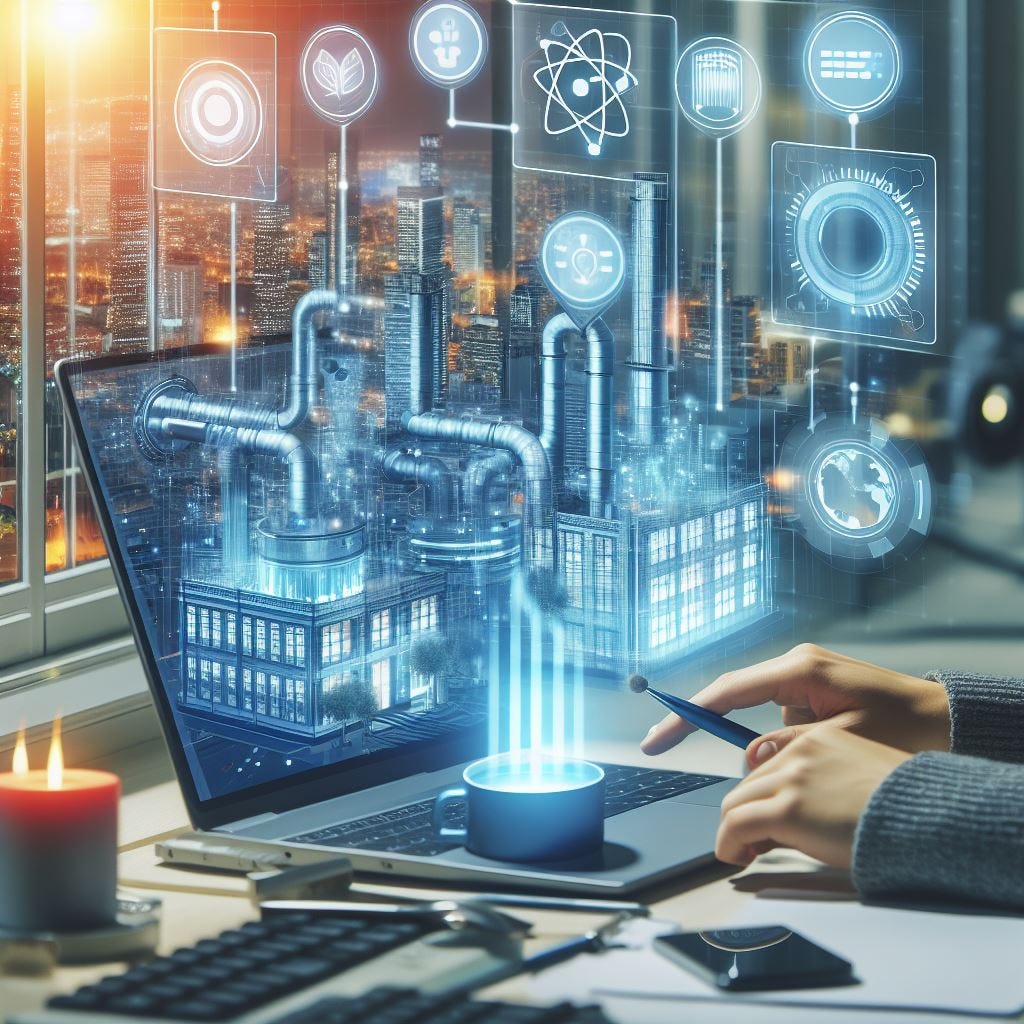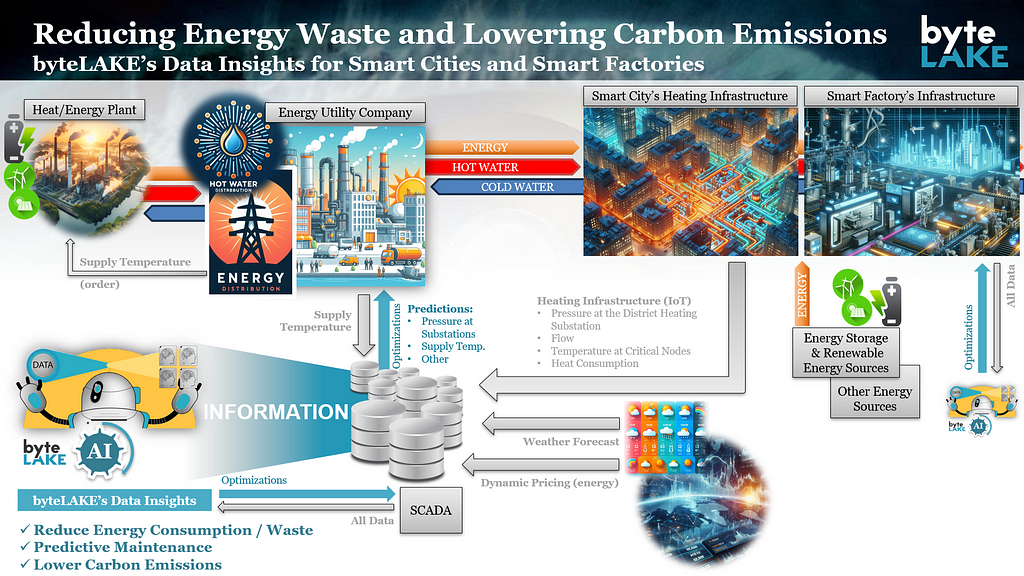How Experiential Etc is Shaping the Future with AI
AI-Powered Fitness Startup Portl Secures Major Investment from Leading Funds
Unlocking the Power of AI: Transforming Data into Actionable Insights
In the ever-evolving landscape of technology, the term “Artificial Intelligence” (AI) has become ubiquitous, often sparking discussions and debates about its true nature and potential. Regardless of the label — whether it’s AI, Artificial Intelligence, Deep Learning, Machine Learning (ML), or automation — these technologies are essentially a collection of algorithms that have the remarkable capability to extract valuable information from diverse data sources.

AI is a collection of algorithms that can extract valuable information from diverse data sources.
Imagine turning raw data, such as images, videos, sound recordings, sensor readings, documents, verbal inputs, emails, and more, into meaningful insights. These insights could range from identifying faulty elements in pictures, detecting scratches on surfaces, counting items in a container, diagnosing equipment issues from sound patterns, predicting maintenance needs based on sensor data, and recommending optimal energy-saving settings based on various factors. The possibilities are endless, and AI enables us to harness the full potential of data in various domains.

Once data is transformed into information, the next step is defining the scenario, which determines the action to be taken. This action could involve automation, where AI analyzes and processes data to streamline workflows, expedite processes, or enhance safety measures. Alternatively, AI can complement human efforts by providing insights, alerts, or recommendations to optimize performance, mitigate risks, or improve decision-making.
One remarkable application of AI lies in its ability to analyze complex simulations, such as those utilized in Computational Fluid Dynamics (CFD), chemical, or physical simulations. Instead of executing simulations step by step, AI can predict outcomes iteratively, accelerating the process and minimizing computational resources. By leveraging historical data from past simulations, AI learns and refines its predictions over time, unlocking new efficiencies and insights.

However, AI’s impact extends beyond simulation acceleration. It can also revolutionize the entire simulation process by assisting in preparation, configuration optimization, and result analysis. By analyzing past simulations and learning from them, AI can guide engineers in prioritizing simulations, reducing trial and error, and optimizing parameters. This holistic approach enhances efficiency and effectiveness across the simulation lifecycle.
AI can guide engineers in prioritizing simulations, reducing trial and error, and optimizing parameters.
While it makes sense and is usually economically justified (despite overhead related to AI training) to AI-accelerate relatively small, steady-state simulations with predictable parameters, larger, more complex simulations involving tens or hundreds of millions of cells, transient conditions, or frequently changing geometries create a different landscape for AI.
To justify the cost of AI training, we need to go beyond single-simulation acceleration. Again, by leveraging historical data and learning from past simulations, AI can predict outcomes but what is more important, it can also suggest optimal configurations, and streamline the entire simulation workflow. Whether it’s analyzing inputs, assessing outcomes, optimizing parameters, or providing insights, AI serves as a powerful ally in navigating the complexities of CFD simulations.

Through harnessing the power of IoT-generated data, AI becomes a predictive force, foreseeing maintenance needs, uncovering error origins, and recommending energy-saving strategies, fostering efficiency and sustainability across diverse infrastructures.
The synergy between CFD Suite and Data Insights within the energy sector illustrates the transformative potential of AI, mathematics, and creativity. While cameras capture visual data and IoT devices provide real-time inputs and forecasts, the complexity of integrating these streams is immense. Yet, this complexity serves as fertile ground for human creativity. CFD Suite’s AI algorithms, adept at deciphering complex data structures, seamlessly adapt to the influx of information from industrial sensors and user inputs.
By synthesizing this data, CFD Suite becomes the central nervous system of modern infrastructure, capable of optimizing energy consumption and reducing waste across a spectrum of environments, from city-wide heating systems to individual appliances. This integration of CFD Suite and Data Insights heralds a new era of predictive maintenance and sustainable energy practices, underpinned by the boundless possibilities of AI-driven innovation.
In other words, imagine CFD Suite as the brain and Data Insights as the eyes and ears of the energy sector. Like a superhero duo, they work together to make everything smarter and more efficient. CFD Suite’s brainy algorithms can understand complex data, just like solving a puzzle. Meanwhile, Data Insights gathers information from cameras, sensors, and forecasts, like eyes and ears seeing and hearing what’s happening in real-time. When they team up, they can optimize energy use and reduce waste across cities and buildings. It’s like having a super-powered brain and senses working together to make our world greener, more sustainable, and reduce waste.

One common thread across all our AI products is Edge AI — deploying AI locally to process data and generate insights. This approach ensures real-time responsiveness, data privacy, and autonomy, empowering organizations to harness AI’s potential at the edge.
In conclusion, AI is not merely a buzzword; it’s a transformative force shaping the future of industries. While integrating AI into workflows may not be as straightforward as installing office software, the benefits are undeniable. As AI continues to evolve and mature, its applications will only become more diverse and impactful. If you’re interested in exploring AI solutions or have innovative ideas to share, don’t hesitate to reach out. The possibilities are limitless, and together, we can unlock the full potential of AI.
Unlocking the Power of AI: Transforming Data into Actionable Insights was originally published in Becoming Human: Artificial Intelligence Magazine on Medium, where people are continuing the conversation by highlighting and responding to this story.
Humane’s AI Pin Struggles Lead to Potential Sale Talks, Insider Sources Reveal
Energy and Utility Companies are Ready for AI — Let’s Explore the Benefits.
Energy and Utility Companies are Ready for AI — Let’s Explore the Benefits.
Explore byteLAKE’s Data Insights: Fueling Efficiency, Sustainability, and Cost Reductions in Energy and Utility Sectors through AI Integration.
According to a study in the article, Utilities say they’re ready for AI. Where should they start? (power-grid.com, close to 75% of energy and utility companies have either adopted AI or are actively considering its integration into their operations. It’s no surprise to me, given that Artificial Intelligence (AI) plays a crucial role in transforming energy utilities and powering smart cities. Here are some ways AI is making an impact:
- Smart City Initiatives: AI helps optimize utility operations in smart cities. By analyzing vast amounts of data, it contributes to sustainability and efficiency. For example, geospatial analysis tools assist cities in preemptively managing road maintenance costs.
- Real-Time Insights: Energy firms and grid operators integrate AI, machine learning (ML), and the Internet of Things (IoT) to capture real-time data. This enables optimal product and service delivery.
- Enhancing Security: AI technologies analyze extensive data to identify patterns indicating cyber threats within power grids, bolstering security.
- Energy Projections: AI assists in discovering new energy projections and optimizing production from existing infrastructures in the energy and utilities industry.
Just looking at these examples, AI is a driving force behind sustainable energy practices and smarter cities.
But let’s start from the beginning. What is AI? Artificial intelligence (AI) comprises a collection of algorithms that have the remarkable ability to transform various types of data, including images, sounds, videos, and sensor data, into valuable insights and actionable information. By integrating AI with online forecasts, such as weather predictions, and real-time inputs from operators, AI systems can analyze vast amounts of data to identify patterns, optimize maintenance tasks, suggest optimal machinery settings, and support decision-making processes aimed at reducing overall energy consumption and improving efficiency.
Utilities companies are under increasing pressure to optimize their operations, reduce costs, and minimize their environmental impact. With AI, utility companies can automate operations, optimize costs, reduce energy consumption, and lower their carbon footprint, all while enhancing overall efficiency and performance.
One of the key advantages of AI in utilities is its ability to leverage vast amounts of data from various sources, including IoT devices, historical data, online data, and weather forecasts. By harnessing this data, AI can dynamically adjust energy pricing to synchronize with demand fluctuations, helping utility companies maximize revenue while ensuring cost-effectiveness for consumers. Additionally, AI can analyze this data to suggest strategies for lowering energy costs, optimizing consumption, and reducing waste, ultimately leading to a more sustainable and efficient energy ecosystem.
In the context of smart cities, AI plays a pivotal role in orchestrating various interconnected systems to enhance overall functionality and livability. By integrating AI into smart city infrastructure, companies can optimize energy management, improve resource allocation, and enhance overall sustainability.
Take a moment to explore the illustration below, depicting the typical deployment of byteLAKE’s Data Insights in both Smart City and Smart Factory contexts. In the Smart City scenario, AI integrated into Data Insights harnesses data from SCADA systems (Supervisory Control and Data Acquisition), empowering utility companies to optimize their operations effectively. By analyzing this data, the AI suggests the ideal supply temperature required to deliver the necessary heat level to all infrastructure nodes while simultaneously reducing overall costs. Moreover, byteLAKE’s Data Insights utilizes AI to optimize costs and minimize energy losses in district heating networks and factories. For instance, even a slight reduction in flow temperature, say by 1–2 degrees, can translate into substantial savings, amounting to millions of euros annually. Furthermore, Data Insights offers additional benefits, such as forecasting and optimization, predictive maintenance, and robust monitoring and management capabilities. Through AI-driven insights, utility companies can proactively address challenges, streamline operations, and enhance overall efficiency, thereby fostering a sustainable and resilient energy ecosystem.

In smart factory settings, AI is revolutionizing energy management by optimizing the utilization of different energy sources. By analyzing data from SCADA systems, sensors, weather forecasts, and other sources, AI can forecast energy demand and optimize the operation of heating plants, reducing costs and ensuring efficient heat distribution. Additionally, AI can predict equipment failures and maintenance needs, enabling proactive maintenance to avoid unexpected downtime and optimize overall operational efficiency. Furthermore, AI algorithms can monitor production lines, detect errors, and improve remote management of individual elements, ensuring smooth and uninterrupted operation.
For example, AI can optimize the management of different energy sources, based on contracts with Utility companies, but also renewable energy, and other sources, by combining data from weather forecasts, schedules, shifts, and planned activities. This enables Smart Factories to develop proactive strategies to optimize energy consumption, reduce waste, and lower carbon emissions, ultimately contributing to a greener and more sustainable future.
byteLAKE’s Data Insights uses AI to optimize costs and reduce energy losses in district heating networks and factories. For example, reducing the flow temperature by just 1–2 degrees can save millions of euros per year.
In summary, AI is transforming Utilities, Smart Cities, and Smart Factories by revolutionizing energy management, optimizing costs, and reducing environmental impact. By harnessing the power of AI, Utility companies can automate operations, optimize energy consumption, and enhance overall sustainability, paving the way for a more efficient and greener future. With AI-driven solutions, companies can stay ahead of the curve, driving innovation and delivering value to both consumers and the environment.
If you want to learn more, you might find these articles interesting as they are related to the industrial AI subject:
- A Comprehensive Guide to Deploying AI in Industries: From Idea to Deployment | by Marcin Rojek | Apr, 2024 | Medium
- Harnessing the Power of AI and IoT: Revolutionizing Data Insights for Industry 4.0 | by Marcin Rojek | Apr, 2024 | Becoming Human: Artificial Intelligence Magazine
https://medium.com/media/a4b6a14acf115882e6876ab485c50b86/href
Energy and Utility Companies are Ready for AI — Let’s Explore the Benefits. was originally published in Becoming Human: Artificial Intelligence Magazine on Medium, where people are continuing the conversation by highlighting and responding to this story.
How is AI Helping Indian Railways
SoundHound AI, Perplexity Collaborate for Next-Gen Voice Assistants in IoT
Google DeepMind’s AlphaFold Unveiling Potential in Biology
Microsoft Introduces AI-Powered Copilot Features to Enhance Microsoft 365
AI is… about FINDING ANSWERS in the DATA.
We all collect data. So do all industries. But what’s the first step in planning the AI transformation? Finding a scenario where AI could help.
I’ve been writing about AI for quite some time now. Through numerous webinars and discussions, I’ve come to a conclusion: perhaps I’ve been focusing too much on the implementation and deployment of AI. During these conversations, it became evident that many industry leaders face a common challenge — they struggle to identify a starting point for integrating AI into their operations.
The more I engage with industry professionals, the more I understand the critical importance of addressing the fundamental question: Where does one begin the journey towards AI integration?
Before AI can even grace the agenda of workshops or meetings, organizations grapple with the daunting task of pinpointing how and where AI can be leveraged to drive meaningful impact. It’s not merely about deploying AI; it’s about finding the right scenario, the pivotal moment where AI can unravel insights and catalyze transformation.
This blog post will focus on just that: a list of a few pathways you can consider while jogging, swimming, surfing, or engaging in any activity before you jump into your car and head to meet your teams.
So what’s AI? While there are many definitions, we at byteLAKE say that AI is about transforming DATA into ACTIONABLE INSIGHTS.

And now, where could be your starting point for AI
If you happen to work in manufacturing, consider these scenarios:
- Automated visual inspection of products, parts, and components: cameras can help you automate quality inspections, detecting scratches, dents, paint chips, etc. AI can analyze images of your products and validate colors, prints, labels, etc.
- IoT sensors data analytics typically leads to implementing scenarios like predictive maintenance for better insights into processes, lowering the amount of unplanned downtimes, detecting risks earlier, etc.
- General data analytics typically helps find optimal setups or configurations to reduce energy consumption, identify reasons for incidents, etc.
In logistics, AI is typically used to automate counting, ensuring the quality of shipments, etc. A common phrase I have been hearing in that sector is along the lines of: if we ship too many products, hardly ever someone informs us about that. But, if we forget to send anything, we always get complaints which impact our reputation. Therefore, if working in logistics, think of scenarios where:
- Cameras can help you count products, analyze what you put into containers and, for instance, trigger an alarm if the wrong barcode or an expired product is detected.
- AI can count boxes, automate inventory processes, and, very much like in manufacturing, monitor overall quality: checking labels, validating documents, inspecting packaging, etc.
I need to explicitly mention the paper industry as we have been delivering AI solutions there for many years now. I assume that not many of my readers know, but AI can visually inspect the whole process and, for instance, detect quality issues in the paper sheets, boxes (i.e., missing prints, wrong labels), or monitor the papermaking process by measuring and analyzing the so-called wet line, aka waterline.
The automotive industry, another exciting sector with huge potential for AI, has seen significant progress. Most of the already mentioned aspects would apply there as well. Besides visual inspections and data analytics, sound analytics is embraced on assembly lines. AI can, for instance, analyze the sound produced by car engines or various car components like pumps, bearings, etc., and detect nuances that can identify faults or errors.
Let me finish this blog post by mentioning the energy sector where AI can, for instance, help you analyze all the data generated by various sensors attached across your infrastructure and suggest, for instance, optimal settings to minimize downtimes, reduce overall energy consumption, or improve reliability and client satisfaction.
can help you find answers within the vast expanse of data, enabling data-driven decisions. It can take into account readings from IoT sensors as well as your teams by analyzing their inputs, combining all of these with online data like weather forecasts, regulations, etc., and taking actions to minimize risks, identify issues, and suggest optimizations.
And I could continue listing other examples as basically EVERY industry has areas where AI can easily automate or optimize various operations. And of course, AI is not just a camera or intelligent sensor. It typically builds up into a robotic arm or a software system that either moves things around and AI becomes just a set of workers focused on certain things like:
- AI-robot #1 performs visual inspection
- AI-robot #2 performs data analytics
- …
- AI-robot #n consolidates all of these and turns everything into information: SET parameters X, Y, Z to A, B, C, respectively to reduce energy consumption by 30%, avoid downtimes and send maintenance teams to area #41 and #51.
Although there are other areas where AI can help like, for instance, the back office of all mentioned industries (document processing, boring office task automation, etc.), I hope this blog post will still help at least some of you identify the first one or yet another area where to start your next AI journey. Have a great weekend!
https://medium.com/media/20f6637885c3f261f9c27f3a9f60951b/href
AI is… about FINDING ANSWERS in the DATA. was originally published in Becoming Human: Artificial Intelligence Magazine on Medium, where people are continuing the conversation by highlighting and responding to this story.